Evidence shows the continuous creation of water, coal, oil, diamonds, methane and more in space. Is there an overall mechanism that unites all of these processes?
Disrupting the Grand Narrative of our times
Everybody knows that's how it works – they taught us this in school. The trees died millions of years ago. They formed layers in the earth that got compressed over time and formed coal.
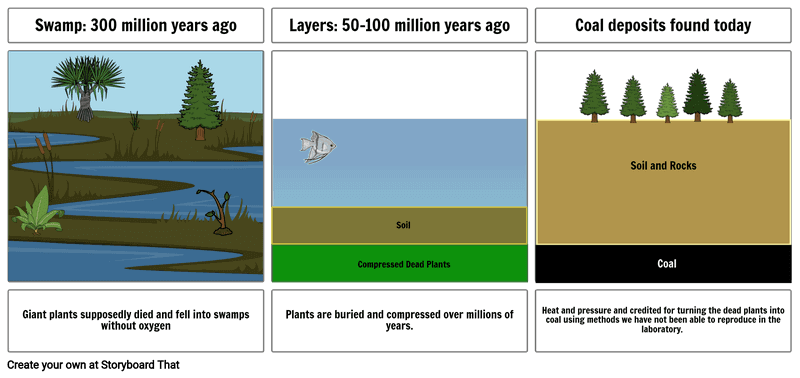
Sea plankton and algae formed oil in a similar way with the pressures of the Earth transforming dead, organic material into the layers of energy that keep our modern world running. It is right there in the name – fossil fuels and everyone know that fossil fuels are going to run out very soon. We can’t replace them as they take millions of years to form.
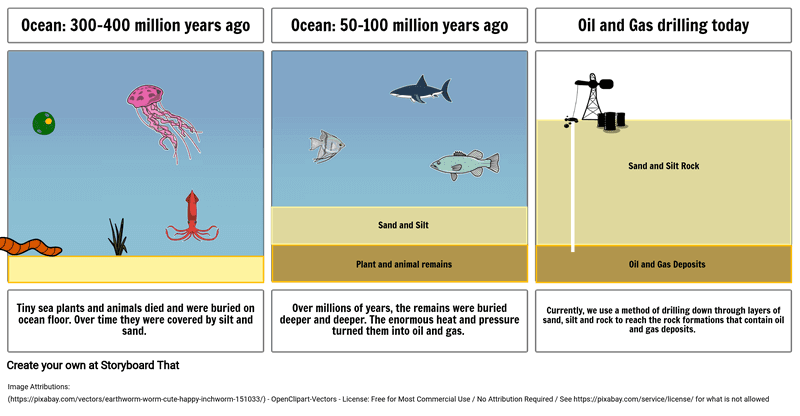
Our enthusiastic burning of fossil fuels is causing the biggest catastrophe that human beings have ever faced – climate change on a scale so great that it could make our planet uninhabitable. This is the grand narrative of our times. Our era is defined by the use of ancient sludge created by long-dead organic material that we have greedily worked through, endangering ourselves and all planetary life in the process.

But could we have this all wrong? No, I am not a 'climate change denier'. On the contrary, I have come to the conclusion that global climate can indeed go through catastrophic changes. It's the first part of the process that I am starting to question. How much evidence do we really have that coal and oil are fossil fuels made from the long-dead bodies of marine life and trees? It is almost beyond heretical to question this narrative as it is so enshrined. Even discussing this topic seems downright bizarre.
Reassessing 'fossil fuel' creation
But something has been niggling at me for a while. Everything I have discovered about the planet and how it really works has made me reassess the process of fossil fuel creation. I have started to realise that another process could be responsible for the creation of oil and coal. Amazingly, I have found mind-blowing evidence that suggests that I am right.
To cut to the point, I have concluded that oil and coal are not created by trees and the compressed bodies of tiny creatures that died millions of years ago. They are created by a process that occurs deep within the Earth itself.
In fact, the same process occurs at many different levels across the universe at the level of galaxies, stars and even planets. We are finding reservoirs of oil and its precursors in space, even on Mars and on various moons. These are places where we have assumed biological life has never existed.
Coal in Space?
But let's say we have been wrong all along and marine life has been abundant on other planets and moons giving rise to the lakes of oil we have been finding there, surely we won't find coal in space? Everyone knows that coal comes from trees and it is a real stretch to say that other planets of our solar system have been covered in forests.
Yet much to the amazement of scientists, even coal has been found in space, being rapidly ejected from stars. Either there is abundant marine life on other planets and moons and forests on stars or something other than a biological process is responsible for the creation of so-called fossil fuels.
The Abiotic theory
I am by no means the first person to suggest that the biological origin of fossil fuels has its problems. It turns out that a few people have already been chipping away at the idea that fossil fuels are not actually fossils: the concept is called the Abiotic theory and it is mostly ignored.
Notably, some Russian and Ukrainian scientists have been questioning the idea since the 1950s and physicist, Thomas Gold in his book, 'The Deep Hot Biosphere' also clearly spells out why the traditional view of fossil fuel creation doesn't tally with a lot of the evidence.
In this article, however, I am going to go even further. I am asserting that oil, coal and indeed many carbon-based organic molecules are created by the Black Hole Principle itself and we can find evidence for this same creative process at many levels of the universe.
Asserting that oil and coal come from processes that happen within black holes that also occur at every level of the universe is extremely radical and to explain how I came to that conclusion we need to backtrack a bit to explain The Black Hole Principle.
Back up into the cosmos
It all started for me in 2003 when I was out walking in the woods. I had been following the latest findings in cosmology, in particular, that gamma-ray bursts were being seen around quasars and microquasars and that these objects in space had black holes associated with them.
An article I was reading in New Scientist stated that black holes come in different sizes and that small quasars had corresponding small black holes associated with them. A quote from Sir Martin Rees explained that no matter the size of the quasar the behaviour remained the same.
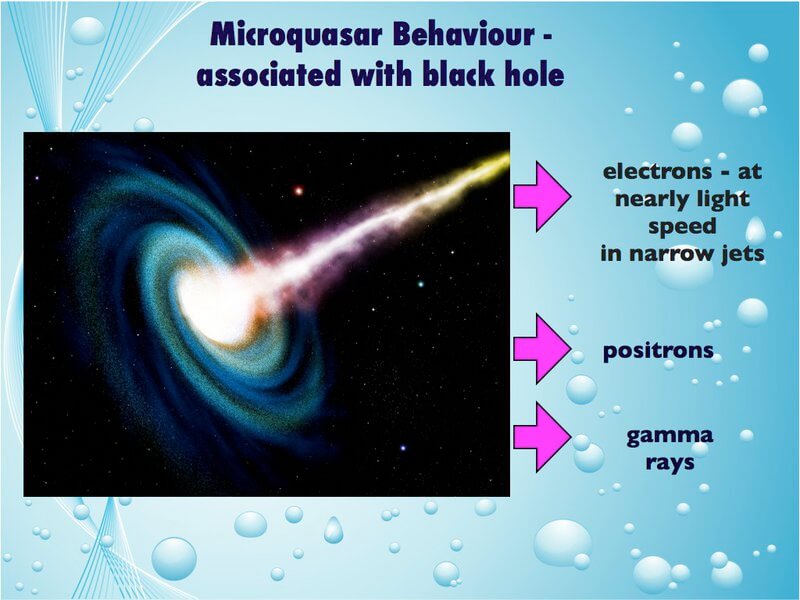
So what is the behaviour of a microquasar? We have observed that gamma-ray bursts are being given off by these objects as well as jets of electrons at almost the speed of light.
Bear in mind that these jets coming off the microquasar are in the vicinity of a black hole, according to these scientists. A question that might arise is; why don’t the black holes just gobble up these gamma rays as nothing can escape a black hole, not even light? And why do we see electrons moving at the speed of light coming from these quasars too?
The Big Insight
The answers to these questions came to me in a massive flash of insight whilst out walking my dog in the woods in September of 2003. As I sat on the low branch of an oak tree, it was as if my consciousness blended with the universe itself and I was shown some of its inner workings.
I saw that black holes are not really the guzzling monsters we think they are but are the creative forces of the universe. Later, in a dream, I saw that every level of the universe works in the same way – hence I called this mechanism The Black Hole Principle.
The Black Hole Principle recognises that most of the universe is actually invisible to us from the perspective of what we call the three-dimensional world. Scientists generally call this dark matter and dark energy and we know that these mysterious aspects make up the vast majority of the universe. Everything that we can see and touch, including stars, planets and even ourselves, make up just about 0.1% of the known universe as an estimate.
Beyond the Speed of Light
So what is the rest of the universe made up of? In my vision, I saw that it was beyond what we call, the speed of light. We currently believe that the speed of light is the speed limit of the universe after Einstein's realisation – nothing can go faster than the speed of light.
But that is not what Einstein actually said. He said that nothing with mass can travel faster than the speed of light because any object would become infinitely massive as it approached the speed of light.

But what about things that do not have mass such as light itself? Do photons of light travel faster than the speed of light? The answer is yes – in fact, there is a whole world beyond what we can see and measure with our physical, mass-based instruments.
What mystics have known through the ages and what was shown to me that day is that it is the world beyond the speed of light that creates the world below it.
The Black Hole Principle
In my vision, I saw the way that black holes really work. They still have an infinite core similar to the concept of a singularity. From that core, spirals of light pass from higher dimensions to lower until the light reaches the edge of our reality which is at what we call the speed of light.
When a photon of light reaches this boundary, it then splits and forms a particle of matter, such as an electron and a particle of antimatter, such as a positron.
The electrons shoot out of the black hole at just below the speed of light because they have just slowed down to our world. Although this behaviour of electrons has been observed, astrophysicists cannot work out why they are moving so fast.
But this is not all. The matter and antimatter particles recombine again to form light in the form of gamma rays. This process is called annihilation and as the two particles combine they cancel each other out and form light. This cycling continues at the edge of a black hole. It has no set pattern.
This is why we detect intermittent gamma rays and electron bursts as well as antimatter at the edge of black holes. There are other intermittent forms of radiation too, such as microwaves and radio waves. We have given many different names to these processes such as quasars, pulsars etc but really they are all expression of the same mechanism, whether they happen at the centre of a galaxy or throughout the galaxy. They are different levels and expressions of the same underlying principle.

Black Hole Atoms
And that is not all; the same process happens at every level of reality from the micro to the macro. So if you revisit what you know about subatomic particles you will remember that in order for an electron to move down an energy level, it combines with its antimatter partner – a positron and this emits a photon of light.
Just as in a galactic black hole, you cannot fully predict the pattern of annihilation and separation of the matter and antimatter. This is why radioactivity is not totally predictable too. This is the same antimatter-matter-photon breathing process as in the galactic black hole, just at the level of the atom.
Bipolar Jets of Creation
Over the years since I had this vision, I have found evidence of this process throughout space. From stars and planets to even comets, they all give off fine jets – often in a bipolar pattern. This means that the jets are at 180° from one another which is a pattern that is consistent and not easily explained by the notion of black holes being destructive gobblers.
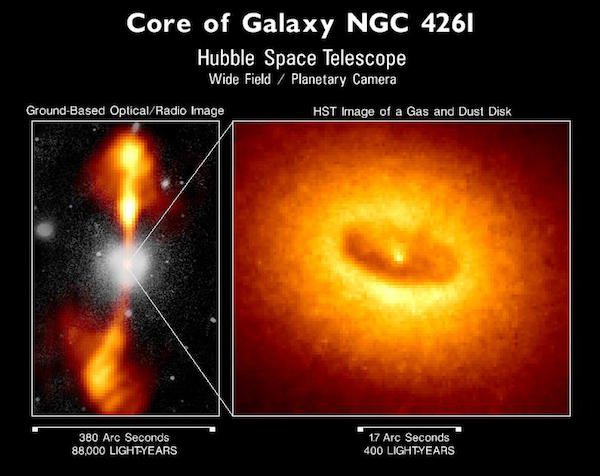
This intermittent cycling of matter, antimatter and light to form bipolar jets is present in many different bodies and in different sizes. We refer to these bodies with various names, but the same process is occurring at every level, just expressed in different ways.
For example, through our exploration of the solar system, we have seen eruptions occurring on moons that we thought were lying dormant. We see fountains of antimatter pouring out of the centre of galaxies and there are bubbles of gamma rays arising from our very own Milky Way.
Mysterious Earth
However, it was when I started to look for the Black Hole Principle at the level of the Earth that things really started to get interesting and I found some of the strongest evidence yet.
Our planet has many mysterious processes that we have yet to understand. It may seem as if scientists have it all worked out but look beyond the textbooks and you will find that something as common as rain has not been fully understood.
For example, we still don't know exactly why some clouds rain and others don’t. The same goes for many different and sometimes dangerous processes such as volcanoes, earthquakes, hurricanes and even common thunderstorms. Despite the latest technology, the exact mechanism behind all these phenomena is still a mystery.
Thunderstorms are mini black holes
As we entered the era of the satellite we were able to look back on ourselves for the first time and see our own earth's atmosphere. As we did, seemingly mundane weather phenomena became even more intriguing. Amazingly we found that gamma-ray bursts, similar to those as found in space were just above our heads as an everyday occurrence in thunderstorms. We call them Terrestrial Gamma-Ray Flashes or TGFs for short.
It was in the area of thunderstorms and weather in general, that I was able to make some of the strongest predictions based on the Black Hole Principle. Once you know the pattern, it is quite easy to predict what you should find: fast-moving electrons at almost the speed of light, antimatter and gamma-ray bursts. We are already familiar with the fast-moving electrons within thunderstorms; they are more commonly known as lightning.
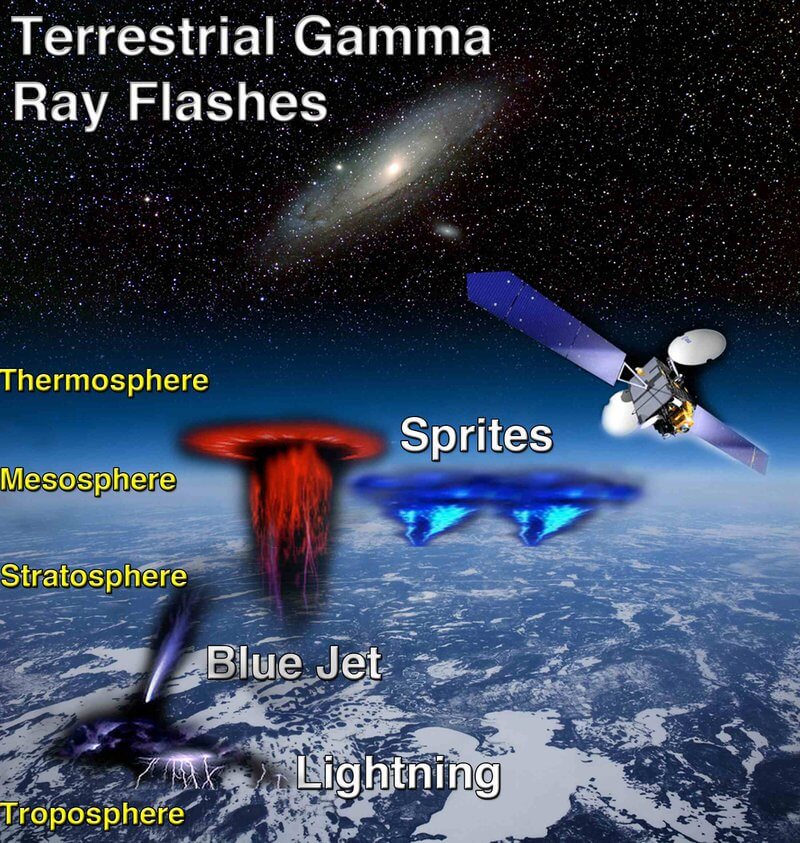
We are told in school that these lightning bolts and their accompanying sounds of thunder are caused by the build-up of static electricity in clouds and the discharge sends these fast-moving bolts to the ground like a spark. However, not enough charge builds up in clouds to create just one bolt of lightning according to our instruments.
As I said earlier, we have also discovered gamma-ray bursts in storms known as Terrestrial Gamma-Ray Flashes. So the last element is antimatter and that was indeed discovered in thunderstorms by NASA in 2010 just as predicted by The Black Hole Principle.
Gamma-ray bursts and antimatter in Hurricanes
In 2018, gamma-ray bursts and antimatter have also been found being inside hurricanes. We already knew that lightning accompanies hurricanes. So both thunderstorms and hurricanes display Black Hole Principle behaviour. They are intermittent, they discharge fast-moving matter in the form of electrons, antimatter and gamma-ray bursts. And, as we are starting to realise in thunderstorms, these discharges even take the form of bipolar jets just like galactic black holes. Hurricanes and Black Holes – is there a connection?
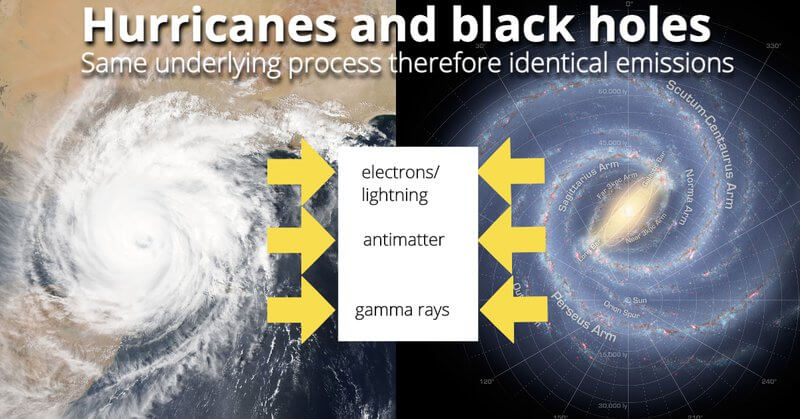
Water from black holes
The astute ones amongst you may have thought of something that happens in thunderstorms that I have not yet mentioned: rain. If a thunderstorm here on Earth displays the same behaviour as a black hole out in space then why doesn't it rain in space?
I realised this even before Punk Science was published in 2006, but I kept this aspect of the theory quiet as I knew it would seem ridiculous to others. Black holes don't produce water right?
But it turns out they do. By 2011 the reports were 'pouring in' to say that water was being found all over space. In fact, the largest body of water ever found is in deep space. And yes water has been found being ejected out of black holes associated with masers.
Water at every level of the universe
Like many scientifically-trained people today, I grew up in an era when we were eager to find the presence of water in space because it would immediately signify the presence of living organisms.
In the last few years, however, water has been discovered across the solar system. Water that is replenished seasonally has been found on Mars. Comets eject water in jets and ever stars spit 'water bullets'. Water vapour has even been discovered coming out of our own star's sunspots.
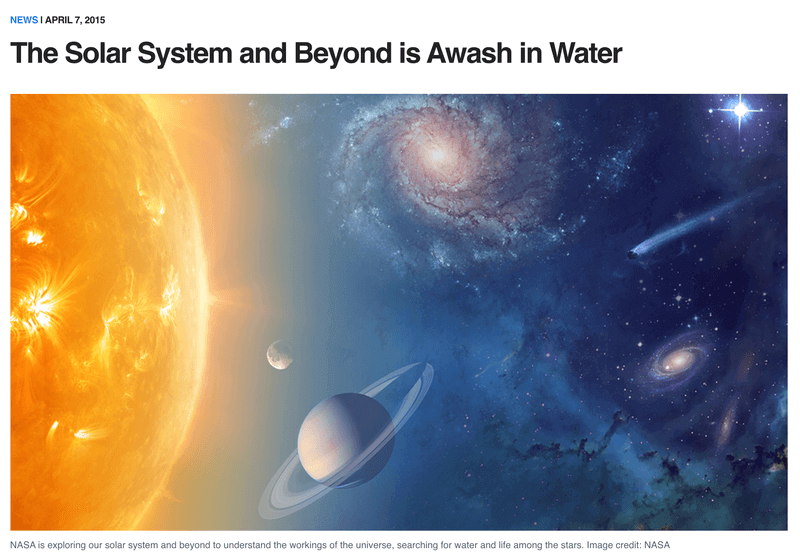
So it seems that the production of water is another aspect of the Black Hole Principle. The concept that even planets have the same mechanisms in their core as a galactic black hole seems fantastical but when you apply this to our own planet, some of its conundrums can be finally solved.
The Source of the Earth's oceans
For example – where did all the oceans of the Earth come from? There has been an extensive debate on this issue but the main consensus is that an asteroid hit our planet in the long distant past, seeding it with water which has been recycled ever since.
Within a few months of my announcing publicly that the oceans of the Earth come from the black hole dynamo in the Earth's interior, the news went around the world that a vast reservoir of water had been found bound up in crystals, deep within the Earth's crust.
The Earth is a black hole!
There are many other examples of Black Hole Principle activity within our very own planet – bipolar jets for example. Most of us have heard about the Northern Lights but not many know that with every ejection near the north pole is another one at the south pole: these create bipolar jets of charged particles.
The interior of our own planet has not been studied extensively but we do know that neutrinos and antineutrinos (called geoneutrinos) have been spotted coming from the planet.
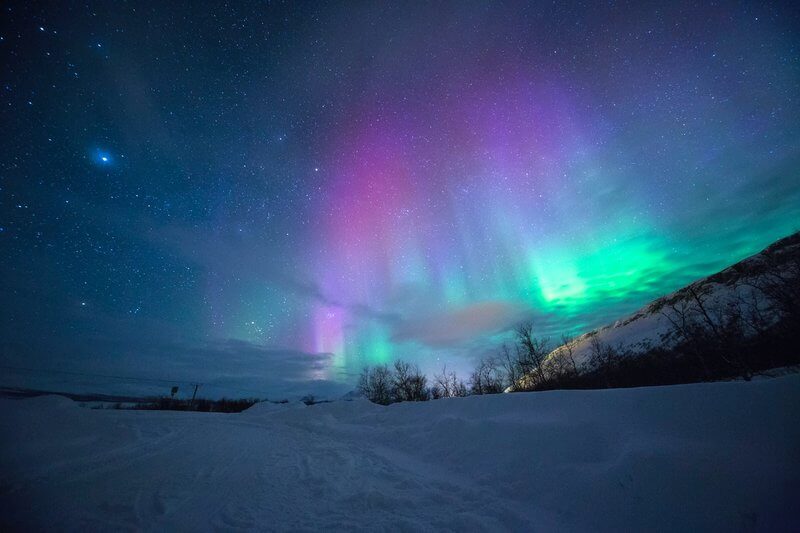
Think back to all the earthquakes that have occurred in quick succession, sometimes at different parts of the world. Is this reflective of bipolar jet activity from the central black hole dynamo of our planet?
Whilst we are on the subject of earthquakes and volcanoes, it is interesting to note that both phenomena eject water – in earthquakes, we call this liquefaction and volcanoes emit water vapour.
The same pattern all the way down
It is not just about the central black hole of a planet or star either. The same pattern exists all the way down in a fractal nature. So the centre of the sun shows Black Hole Principle behaviour but then so do all the sunspots – hence the ejections come from them.
It occurs like this on the Earth as well. The Earth is also a collection of different sized black holes. It displays fluctuating Black Hole Principle behaviour all the way down from large to small. This could have implications for everything from our weather systems as we have already discussed to possibly the Bermuda Triangle phenomenon. Hurricanes are weather systems that show Black Hole Principle behaviour – they emit water, gamma rays, antimatter and lightning just like a galactic black hole.
So I hope I have helped you to see that there are actually many instances where The Black Hole Principle is seen at work on the Earth itself and this is just a small fraction of the examples I could have given.
Oil from the deep Earth
It was while watching a TV show on the Gulf of Mexico that my attention turned to something that may have far-reaching implications for our planet and its problems.
I noticed that in the same vicinity – not only was there a so-called impact crater, so large that it was being blamed for the demise of the dinosaurs, but also oil deep below the ocean floor.
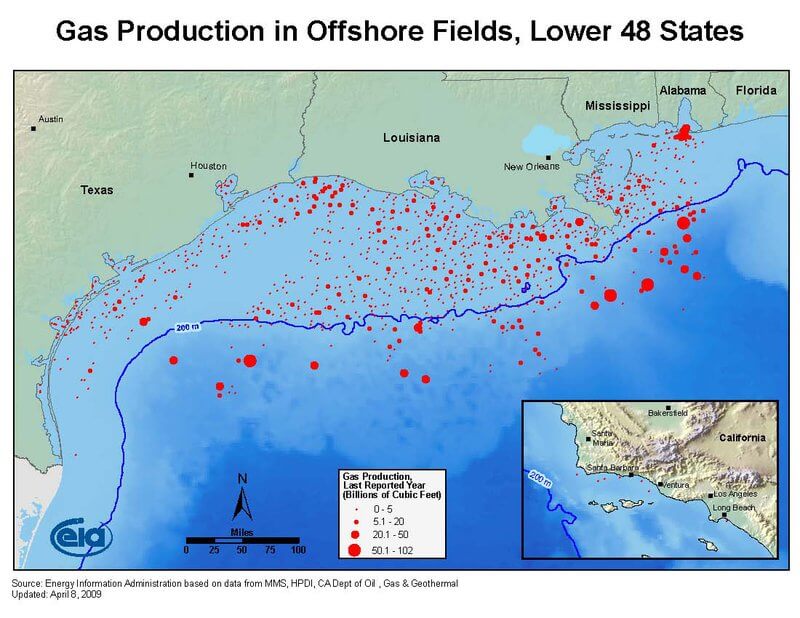
Similar to the way water gushes up from the deep, oil is also known to come to the surface under pressure. For a while now, I have been nurturing the idea that oil is also created by Black Hole Principle forces. I have been careful not to share the idea until now because I know that the received wisdom is that oil is a fossil fuel made out of the crushed, decayed bodies of millions of sea creatures from the long history of our planet.
Organic molecules in space
Although we automatically associate organic chemicals with life forms, scientists have been observing such molecules in space for rather a long time. Clearly the evidence should trigger a revisiting of the accepted wisdom that organic molecules equal life. Yet there is very little discussion on why organic molecules are abundant in space.
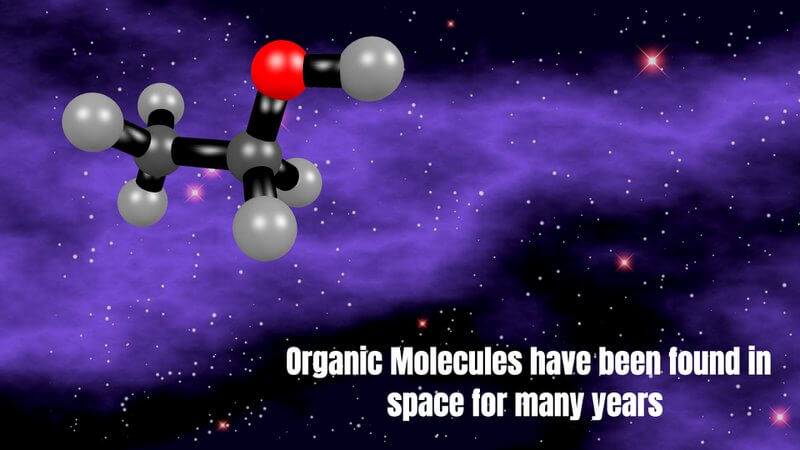
We have known for years that organic chemicals can be found in the vicinity of celestial bodies such as carbon stars. Methane has also been found in abundance on certain planets and moons. These are unlikely to be coming from ancient life forms, so where do they originate from?
Oil from black holes
Amazingly, I was able to find strong evidence that organic molecules could be created as a part of the Black Hole Principle process which could even be responsible for what we call fossil fuels.
If the production of oil is a universal process happening at every level of the universe, then we should be able to find oil in space. And that is indeed the case – a large oil field has been found below the surface of Saturn's moon Titan in 2018, kerogen was found on Mars. Kerogen is also found on Earth and is a form of unrefined oil.
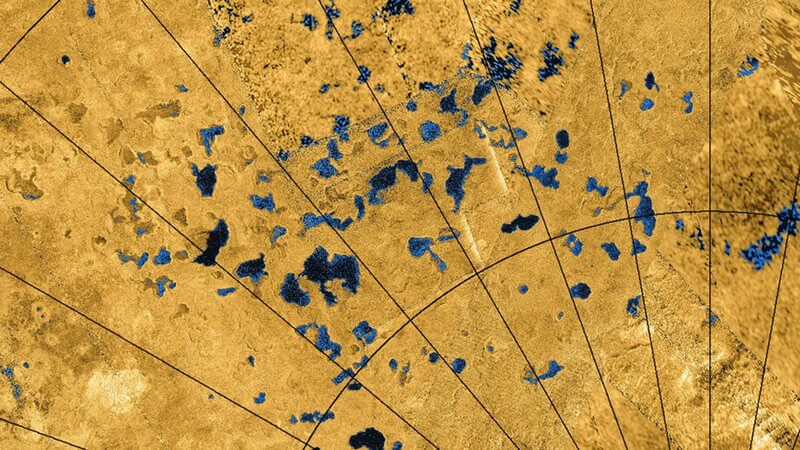
Again, we normally think of kerogen as a remnant of fossilised life forms but if such substances are being found on planets and moons which seem to be devoid of life, then what does it mean? It could be that there were life forms on Mars and Titan millions of years ago and they created these reservoirs of oil in the same way that we think they are created on Earth. Or could there be a process occurring throughout the cosmos that creates oil and organic compounds that does not need living organisms?
Gold's Upwelling Theory
As I have already explained, there is plenty of evidence that the same process of creation called The Black Hole Principle occurs at every level of reality from macro to micro. So it seems that the same process is behind the production of oil. And what about coal? Is this also created by black holes?
In 1999, a book was published by physics Professor Thomas Gold called The Deep Hot Biosphere: The Myth of Fossil Fuels that should have shaken the world. Instead, although nobody could fault his research, his book was pretty much ignored. His Wikipedia page indicates that he failed to prove his points in the 'real world' but other sites say he was successful. From my own reading of his book, he didn't fail in his mission.
In his meticulous research, he points out why 'fossil fuels' have more evidence for being upwelling from deep in the Earth and partially abiogenic than being the result of the laying down of biological material in layers that get compressed over time.
Gold made some excellent points that are well researched and hard to dispute – hence I think they are ignored.
1. Methane gushes from deep ocean vents and even exists as free gas beneath permafrost, therefore it must be an upwelling gas. It is also plentiful in igneous rock which has arisen from the Earth via eruptions. We can compare this behaviour to that of other planets in the solar system such as Mars where we see intermittent plumes of methane.
The intermittent nature of elements rising up from the cores of planets is in keeping with the concept with the Black Hole Principle. Just as the process gives rise to intermittent gamma-ray bursts, it may also give rise to intermittent plumes of methane.
2. Crude oil has never been synthesised in laboratories from biological material.
3. Oil fields refill faster than they should if they were really created from ancient fossilised life forms.
4. Helium is often associated with oil fields – something that has no place in biological processes. Some people actually use this fact to find oil as the association is so strong.
5. Concentrated reservoirs of petroleum can be found at some distance from the kerogen that was supposed to have created it but without any adequate explanation.
6. Biological debris has a higher oxygen content and less hydrogen than fossil fuels. This biological debris is supposed to have given rise to petroleum which has a higher hydrogen to carbon ratio. This would mean that the molecules give up some of their oxygen to become more saturated with hydrogen which is unlikely.
We find a greater hydrogen content in oil wells as we go deeper. This would fit with the upwelling theory as there is hydrogen loss as during the upwelling process. However, this doesn't fit the biological theory as it means that younger sediments are deposited under older sediments.
7. If oil comes from marine algae and coal from trees such as conifers, why is there such a close relationship between the two? Coal is often found on top of oil. If coal is made from forests that have fallen into deprived swamps and oil is formed from marine material, why is this relationship so prevalent?
These deposits are also associated with methane gas which is assumed to be coming from the coal. But there are large surges in methane which can cause explosions in mines so severe that mines such as those in Hokkaido, northern Japan have been shut down. These methane surges fit with the intermittent nature of methane plumes we observe on planets such as Mars.
Even after Gold's death, a massive coal seam was found in the North Sea which has been long associated with oil. The mainstream media reported the presence of coal in this area as being caused by shifts inland. But this is not the only location where coal and oil have a strong association; Gold also maps out the close correlations in Brazil and Indonesia. Apparently there is a saying, 'coal on top oil below'. This makes no sense from the perspective of the biogenic theory as vast amounts of marine creatures would have to be located in the same regions as large forests all over the Earth.
Coal also appears with vertical stacking which actually crosses horizontal sedimentary layers. This is more in keeping with the upwelling picture.
Gold really was a pioneer in realising that 'fossil fuels' are upwelling and not created from biological processes at the surface of our planet millions of years ago.
Coal comes from black holes
Although Gold goes so far, I am going further. I believe that organic molecules are being created by interdimensional processes that occur via The Black Hole Principle at the centre of everything from galaxies, planets and even comets!
But to make such outrageous claims I need to back this up with evidence. This is a new line of enquiry, so this list is far from complete but these are just some of my findings so far.
Coal from stars
One of the most shocking pieces of evidence I have found is that stars are emitting coal. This was spotted by Professor Sun Kwok of the University of Hong Kong.
He was incredulous that a process that is supposed to take at least thousands of years on Earth, was happening rapidly within stars stating, "Coal and kerogen are products of life and it took a long time for them to form," Kwok said. "How do stars make such complicated organics under seemingly unfavourable conditions and [do] it so rapidly?"
Oil from Galactic Centres
I needed more evidence though. I needed to find that oil or coal is being produced by black holes themselves. And yes indeed oily substances are found concentrated near the galactic centres. One of the biggest oil wells we have ever found is in fact, in the Horsehead Nebula.
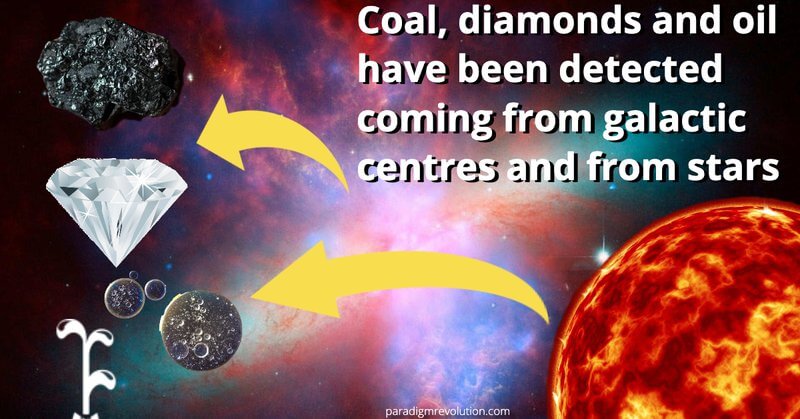
It's raining diamonds
As stated earlier, the most common pattern of black hole ejection is in bipolar jets that are focused and not diffuse in nature. They can be seen shooting from galactic centres at 180° from each other but they are also seen around stars and even planets. You can even see fine jets coming from comets.
So when I read Golds's book and how diamonds are found all over the Earth coming from deep funnels called Kimberlite pipes that are narrow and resemble bipolar jets, I realised we are looking at yet another Black Hole Principle behaviour. Typical structure of a Kimberlite pipe. Not all have diamonds.
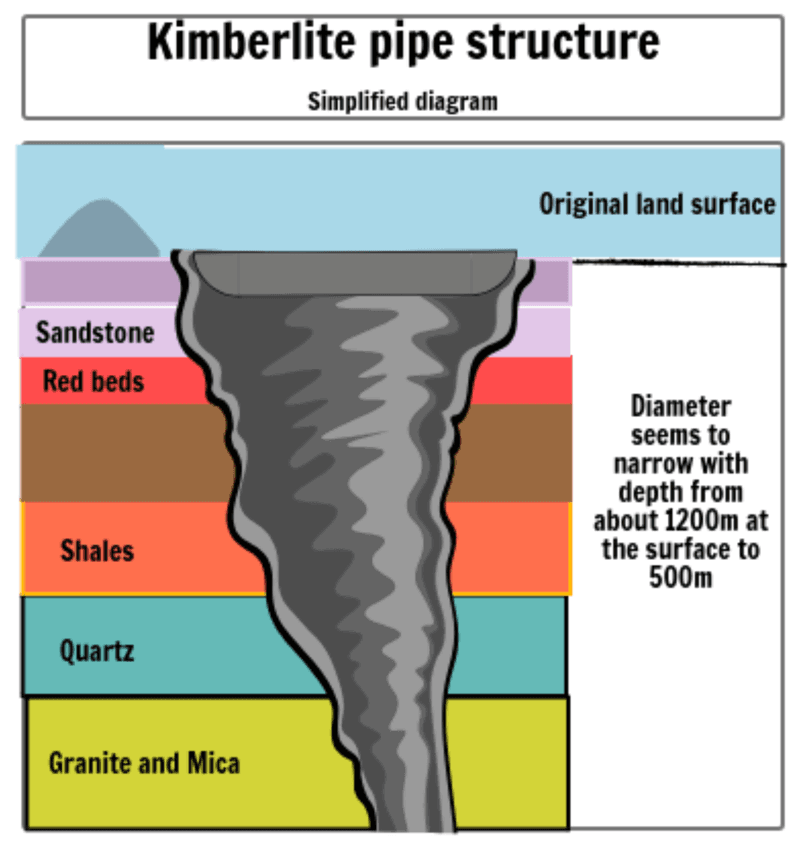
I needed to find evidence of diamond production in space. Indeed diamonds can be found raining down on planets such as Neptune and Saturn. Microdiamonds have been found in great abundance around stars. We have even found a star whose core is made up entirely of diamonds.
Rather than the convoluted argument that astrophysicists have put forward, let's keep it simple. Diamonds are created by black holes. As carbon is created and pressurised, it forms into diamonds, whether it be here on earth or in space – it is the same process. You don't need convoluted, special circumstances for each situation.
Are fossil fuels really running out?
If carbon-based fuels are not fossils, as others have already suspected, but formed by abiogenesis then this also means that theoretically, they should not run out. However, I am not suggesting we should stick with oil and ignore other energy forms.
There is evidence that 'fossil fuels' are being replenished. At the time of writing, the USA is hitting a high in oil production. This is attributed to better technology and techniques. But as you may remember, we were told in the 1970s that there would be little oil left by now. Despite that, it isn't difficult to find examples of oil fields replenishing themselves. Even those rusty old pumps against the landscape are being reused after many years.
This replenishment is explained by mainstream scientists as due to the migration of oil fields as it is unthinkable to them that biological materials are transforming into fossil fuels this fast. But what if we have this all wrong and oil production is coming from processes in the centre of the earth itself?
A unified theory of climate
Maybe we can finally have a unified theory of climate – not just for our planet but for all universal bodies from stars to moons and in between. This means that the same mechanism that causes storms on earth is also creating storms on Jupiter, just at a different scale.
Now we know the basic mechanism we know what to expect.
- Intermittent methane plumes such as those recently found on Mars
- An abundance of hydrocarbons including oil and coal-like substances
- Weather systems on various planets such as thunderstorms and hurricanes that emit water, methane and even diamond rain
- Eruptions that even occur on moons that we think are 'dead'
All of these features have been found in our Solar System much to the astonishment of astronomers.
Conclusions
I believe we are moving towards a unified theory of understanding the universe at many different levels.
This also marks a major shift in the Black Hole Principle – from the creation of particles and radiation to creating the elements. We don't know exactly how these form; do they come out as pure elements and combine within the physical dimensions or is there a higher-dimensional counterpart of water and molecules such as methane that appear in our dimension fully-formed? We simply do not know at the moment.
There is much that we have to discover about the Black Hole Principle but the main points it can tell us is that
- The centre of each body in space works in much the same way but at different scales be that at the centre of a galaxy, a star or a planet.
- Because this is a fractal system, each weather system shows the hallmarks of The Black Hole Principle. Hence storms emit gamma rays, antimatter and electrons, just as supermassive black holes do.
- What is even more extraordinary, as I have just pointed out in this article is that complex molecules are somehow arising from this very same Black Hole Principle behaviour at every level of the universe.
- From water to hydrocarbons, complex molecules are being produced intermittently at every level of the universe. Even the substances that fuelled our industrial revolution – coal and oil can be found in space, on comets, ejected from stars, in galactic centres and in great oil fields on foreign moons.
One simple pattern: Infinite Complexity
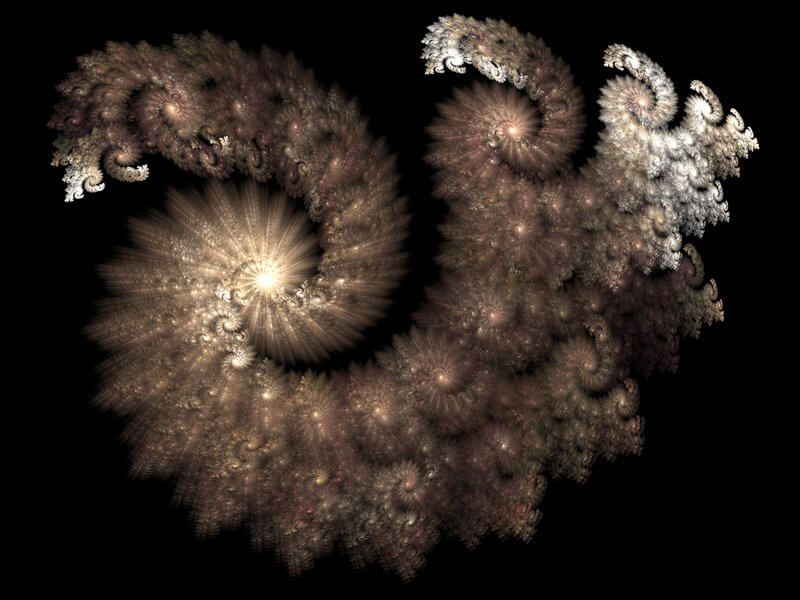
Although this is a radical change in the way we think about the universe, it is also very good news. The universe is simple. One simple pattern gives rise to infinite complexity. Knowing the pattern gives us the ability to predict behaviour throughout the universe.
For example, we now know we will have fuel and water deep into space in case we ever choose to go exploring. This could have massive implications for humanity.
A New Era
Although The Black Hole Principle and its creative force could unite what we formerly have seen as unrelated processes, it opens up more questions too. How does this process create molecules and what is truly happening beyond the speed of light that we cannot measure?
I intend for this to be a new starting point for human exploration, to gain a greater understanding of the universe and to search for truth. In this way, science can move forward into a new era.
© Dr Manjir Samanta-Laughton August 2019

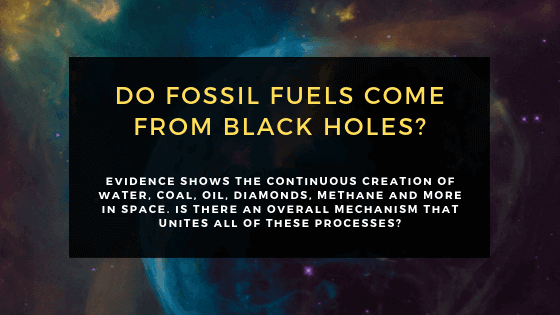


“The Black Hole Principle” is expounded upon mostly where … perhaps in the book, “Punk Science” (2006 so a bit dated now?)?
Is there a next best more recent source for such?
Many thanks for any reply!
Hello
Yes in the book, Punk Science and you can see free updates to the theory within this blog. This article is one of the most comprehensive. The blogs with Punk Science TV episodes may help too. So there are lots of free resources here explaining the theory.
“The Black Hole Principle” … is explained where?
Is this why the Sufis whirl……yay <3
This sounds perfectly logical and right
Of course
Thank you, Linda.
And what of black holes in atoms in our bodies as a source of optimal health?
Blessings OOOMMM
Very good point, Ken. I discuss more about this in the online course Simply Divine – how the Black Hole Principle plays out in the body. I believe the pulsing of the BHP is behind bio-photon emissions.
Mindblowing. Thanks for enlightening us and making it easy to understand, so very well written for the layperson like me. Alice
Thank you so much, Alice.
WOW.
Just wow.
This is the start of a really important global conversation…
It’ll be interesting to see how this new thinking is received – and where it leads to next.
Keep us posted!
Thank you so much, Olivia.